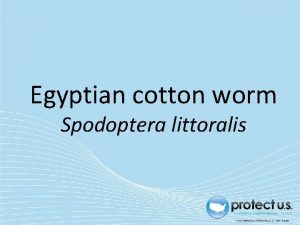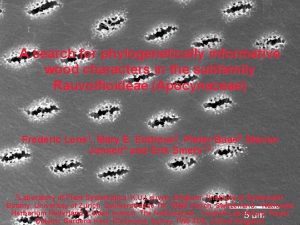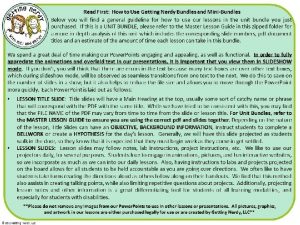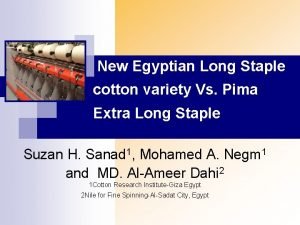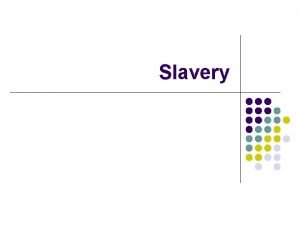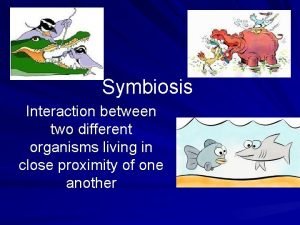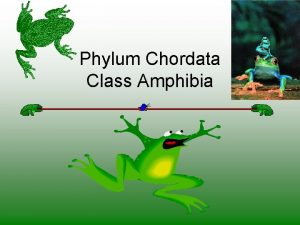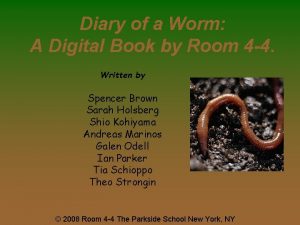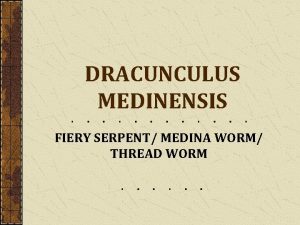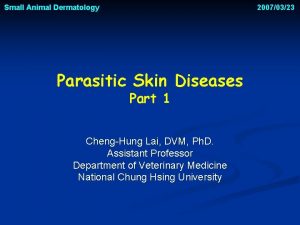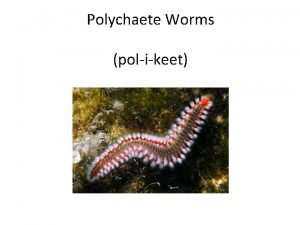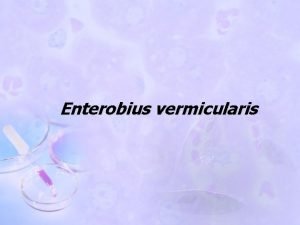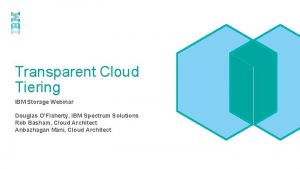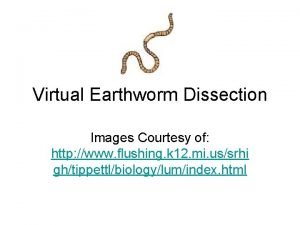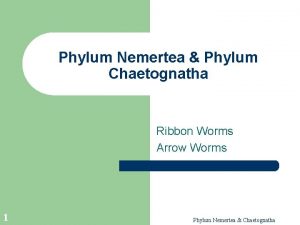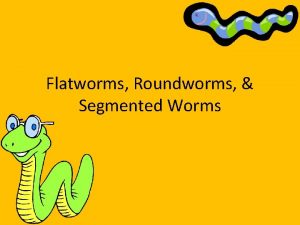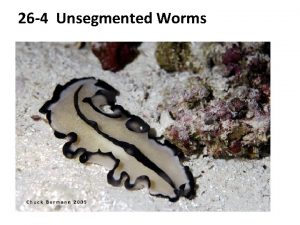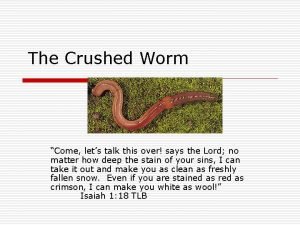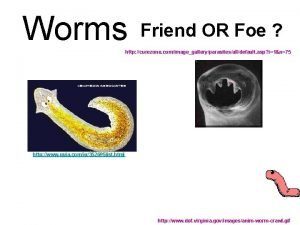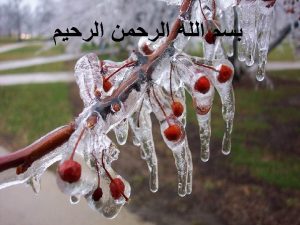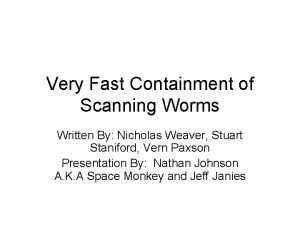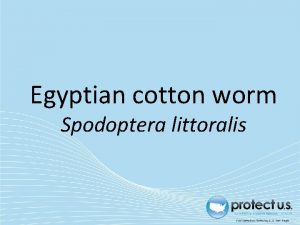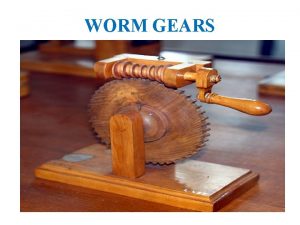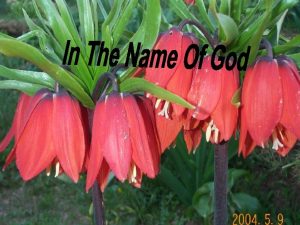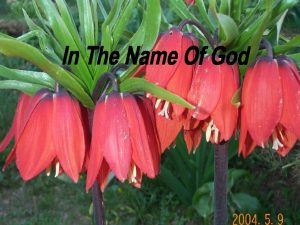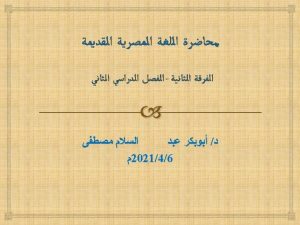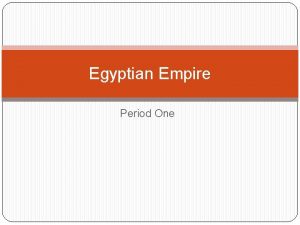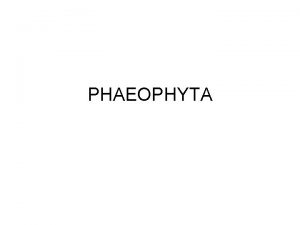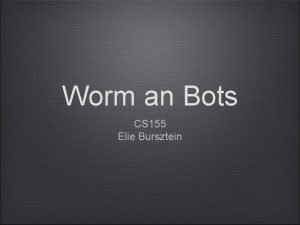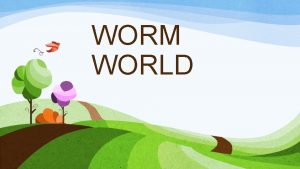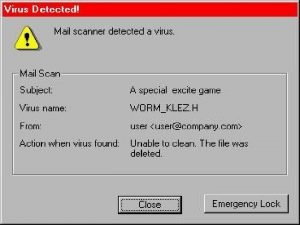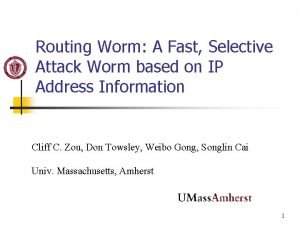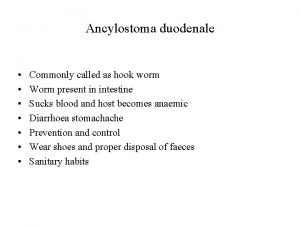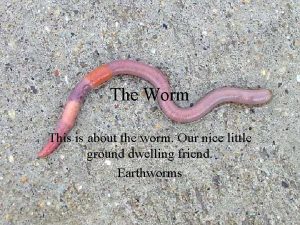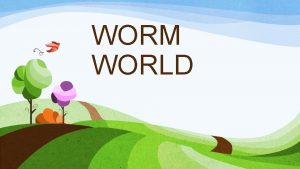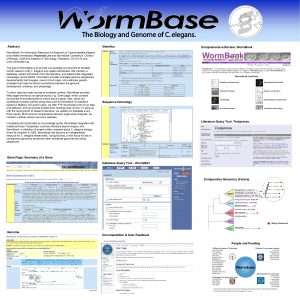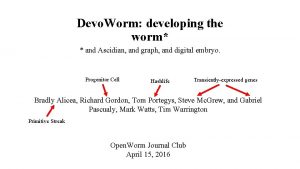Egyptian cotton worm Spodoptera littoralis Egyptian cottonworm Native























- Slides: 23

Egyptian cotton worm Spodoptera littoralis

Egyptian cottonworm • Native to Africa, the Middle East and the Mediterranean countries of Europe. • Greenhouse pest of tomato, pepper, and melon in Spain, Italy and Greece. Image citation: Esmat M. Hegazi, University of Alexandria, Bugwood. org

Egyptian Cottonworm Distribution in the U. S. No survey Surveyed but not found Map citation: Center for Environmental and Research Information Systems (CERIS). Purdue University. "Survey Status of Egyptian cottonworm – Spodoptera littoralis (2016). " Published: 06/21/2016. http: //pest. ceris. purdue. edu/map. php? code=ITBCFPA&year=2016. Accessed: 06/27/2016.

Potential Distribution in the U. S. Map citation: USDA-APHIS-PPQ-CPHST.

Pest of many herbaceous ornamentals and field crops Image credits: peppers – Grapes: public domain, wikimedia. com, Cabbage: public domain, wikimedia. com, Cotton: public domain, wikimedia. com Gerald Holmes, Valent USA Corporation, www. bugwood. org, #5340090; corn - Howard F. Schwartz, Colorado State University, www. bugwood. org, #5361595; tomatoes - Howard F. Schwartz, Colorado State University, www. bugwood. org, #5365838.

Damage to leaves Damage to fruit Ricinus Tomato Image credits: Damage to fruit: Creative commons , A. M. Varela, icipe Damage to leaves: Wolfgang Wagner

• Adults Identification – Grey-brown body – 15 -20 mm (0. 6– 0. 8 in) long Image credits: Left: Julieta Brambilla USDA Right: O. Heikinheimo, Bugwood. org

Look Alikes - Adults Spodoptera ornithogalli Spodoptera praefica Spodoptera latifascia Spodoptera pulchella Image credit: Spodoptera latifascia Lyle Buss, University of Florida, Bugwood. org Spodoptera ornithogalli Natasha Wright, Cook's Pest Control, Bugwood. org Spodoptera praefica: 2012 Jim Moore, bugguide. net Spodoptera pulchella 2012 Paul Dennehy

Identification • Pupae – reddish-brown – 14 to 20 x 5 mm (9/16 to 13/16 x 3/16 in) in length – Two small spines on the tip of the abdomen Image credits: top image - Esmat M. Hegazi, University of Alexandria, Bugwood. org #5140041 bottom image- Wolfgang Wagner http: //www. pyrgus. de/Spodoptera_littoralis_en. html

Identification • Larvae – length of 40 -45 mm (1. 57– 1. 77 in) length – Hairless – Blackish-grey to darkgreen, becoming reddishbrown or whitish-yellow – sides of body with alternating dark and light longitudinal bands – bright-yellow stripe along the length of the dorsal surface Image credits: Top – Forstwirtschaft, Bugwood. org, #0660005 Middle image - Merle Shepard, Gerald R. Carner, and P. A. C Ooi. Bugwood. org, #5368053 Bottom - K. Kiritani, Bugwood. org

Identification • Eggs – Spherical, flattened clusters – 0. 6 mm (< 0. 02 in) in diameter – Clusters of 100 -300 eggs – Covered in hairy, pale orange, light yellow or pink scales Image credits: upper image- Eggs covered with hairy scales (Merle Shepard, Gerald R. Carner, and P. A. C Ooi, Insects and their Natural Enemies Associated with Vegetables and Soybean in Southeast Asia, Bugwood. org) bottom image - Emerging larvae (Amy Carmichael, Queensland University of Technology, Pa. DIL)

Life cycle 4 days 10 - 35 days 5 - 10 days 8 - 27 days Image credit: Adult: Bernard Fransen, Bugwood. org #5140026 Egg mass: O. Heikinheimo, Bugwood. org #06600064 • Larva Biologische Bundesanstalt für Land- und Forstwirtschaft, Bugwood. org #0660005 Pupa: Wolfgang Wagner http: //www. pyrgus. de/Spodoptera_littoralis_en. html

Hibernation and Dispersal • Moths can fly and disperse up to 1. 5 km to new hosts. • In warm climates, up to 8 -9 generations are possible per year. • Overwinters as pupa in the soil. Image credits: Bernard Fransen, Bugwood. org

Monitoring Plastic bucket trap cut in half to show its interior. Image credit: • Bottom right: Andrew Derksen, USDA-APHIS, Bugwood. org #5440169. Left and top right: J. Brambila (USDA/APHIS/PPQ Eastern Region) and R. Meagher (USDA/ARS/CMAVE)

Chemical Control • Many populations of S. littoralis are extremely resistant to pesticides • Insect growth regulators are used against Spodoptera spp. Image credits: Todd Gilligan, Lep. Intercept, USDA APHIS ITP, Bugwood. org

Biological Control • S. littoralis is resistant to many strains of Bacillus thuringiensis. • Xen. Tari® is particularly effective against S. littoralis larvae and is widely used in Spodoptera control. Image credit: Bacillus thuringiensis: Dr. Sahay, wikimedia. com creative commons Nematodes: Tesfamariam Mengistu, Department of Entomology and Nematology, University of Florida Mites: Lance Osborne, Mid-Florida Research and Education Center, University of Florida

Author and Publication Dates • Jennifer Carr – Laboratory Manager, Department of Entomology and Nematology, University of Florida • Amanda Hodges, Ph. D. – Associate Extension Scientist, Department of Entomology and Nematology, University of Florida • Publication date: October 2016

Reviewers • Catherine A. Marzolf – Assistant State Plant Health Director, USDA APHIS PPQ

Educational Disclaimer and Citation • This presentation can be used for educational purposes for NON-PROFIT workshops, trainings, etc. • Citation: – Carr, Jennifer and Amanda Hodges. 2016. Egyptian Cottonworm – Spodoptera littoralis. accessed (add the date) – www. protectingusnow. org

Our Partners • United States Department of Agriculture, National Institute of Food and Agriculture (USDA NIFA) • United States Department of Agriculture, Animal and Plant Health Inspection Service, Plant Protection and Quarantine (USDA APHIS PPQ) • Cooperative Agriculture Pest Survey (CAPS) Program • National Plant Board (NPB) • States Department of Agriculture • Extension Disaster Education Network (EDEN) • Center for Invasive Species and Ecosystem Health (Bugwood) • National Plant Diagnostic Network (NPDN) • U. S. Department of Homeland Security (DHS) • U. S. Forest Service (USFS)

References 1. Brambila, J. 2009. Steps for the dissection of male Spodoptera moths (Lepidoptera: Noctuidae) and notes on distinguishing S. litura and S. littoralis from native Spodoptera species. USDA-APHIS-PPQ. http: //caps. ceris. purdue. edu/webfm_send/2150 2. Brambila, J. Jackson, L. and Meagher, R. Plastic Bucket Trap Protocol. USDA. 2010. 3. CABI and EPPO, Data Sheets on Quarantine Pests Spodoptera littoralis and Spodoptera litura. Retrieved 7/1/2016 from https: //www. eppo. int/QUARANTINE/data_sheets/insects/PRODLI_ds. pdf 4. Hachler, M. (1986) [Notes on three pests of subtropical ornamental plants captured in western Switzerland]. Mitteilungen der Schweizerischen Entomologischen Gesellschaft 59, 263 -266. 5. Hassan, A. S. , M. A. Moussa, and E. A. Nasr. 1960. Behavior of larvae and adults of the cotton leaf worm, Prodenia litura. Bulletin de la Société Entomologique d'Egypte 44: 337 -343. 6. Invasive Species Compendium. Spodoptera littoralis datasheet. Accessed 7/6/2016 from http: //www. cabi. org/isc/datasheet/51070

References 7. Julieta Brambila USDA-APHIS-PPQ Identification notes for Spodoptera litura and Spodoptera littoralis (Lepidoptera: Noctuidae) and some native Spodoptera moths http: //www. invasive. org/publications/aphis/Handout_Spodoptera_Wings_20 13. pdf 8. Michigan State University’s invasive species factsheet. Egyptian cottonworm Spodoptera littoralis. Accessed 6/27/2017 from http: //www. ipm. msu. edu/uploads/files/Forecasting_invasion_risks/egyptian Cottonworm. pdf 9. Ocete Rubio, E. 1984. Study of the biological cycle of Spodoptera-littoralis at different temperatures Lepidoptera Noctuidae. Graellsia 40: 195 -206. 10. Pest Tracker. Accessed 7/1/2016 from http: //pest. ceris. purdue. edu/map. php? code=ITBCFPA 11. Pinhey, E. C. G. 1975. Moths of Southern Africa. Descriptions and colour illustrations of 1183 species. Moths of Southern Africa. 12. Pogue, Michael. USDA Systemic Entomology Lab, Smithsonian Institution. CAPS Lepidoptera Workshop Noctuidae - presentation

References 13. Salama, H. S. ; Dimetry, N. Z. ; Salem, S. A. (1970) On the host preference and biology of the cotton leaf worm Spodoptera littoralis. Zeitung für Angewandte Entomologie 67, 261 -266. 14. Salama, H. S. and A. Shoukry. 1972. Flight range of the moth of the cotton leafworm Spodoptera littoralis. Zeitschrift fuer Angewandte Entomologie 71(2): 181 -184. 15. Salem, S. and H. S. Salama. 1985. Sex pheromones for mass trapping of Spodoptera littoralis (Boisd. ) in Egypt. Journal of Applied Entomology/Zeitschrift fur Angewandte Entomologie 100: 316 -319. 16. Sullivan, M. 2007. CPHST Pest Datasheet for Spodoptera littoralis. USDA-APHISPPQ-CPHST. Revised March 2014. 17. Valent Biosciences Corporation. Spodoptera littoralis. 2014. Accessed 7/6/2016 from http: //cropprotection. valentbiosciences. com/valent-biosciencescorporation-biorational-crop-protection/insecticides/pests/spodoptera-littoralis 18. USDA. 1982. Pests not known to occur in the United States or of limited distribution, No. 25: Egyptian cottonworm. , pp. 1 -14. APHIS-PPQ, Hyattsville, MD.
 Egyptian cotton worm
Egyptian cotton worm Stemmadenia littoralis
Stemmadenia littoralis Earthworm anatomy answer key
Earthworm anatomy answer key Giza cotton vs pima cotton
Giza cotton vs pima cotton Cotton on the roadside cotton in the ditch
Cotton on the roadside cotton in the ditch Middle age floral design
Middle age floral design Worm heart
Worm heart Two different organisms living together
Two different organisms living together Flow
Flow Diary of a worm summary
Diary of a worm summary Medina worm
Medina worm Overpapulation
Overpapulation Clam worm phylum
Clam worm phylum Seat worm phylum
Seat worm phylum Ibm worm cloud archive storage
Ibm worm cloud archive storage Dorsal side of worm
Dorsal side of worm Milky ribbon worm
Milky ribbon worm Flatworms segmentation
Flatworms segmentation Bevel gears vex
Bevel gears vex Unsegmented worm
Unsegmented worm Come let's talk
Come let's talk Trichinella
Trichinella Which is the smallest tape worm infecting man?
Which is the smallest tape worm infecting man? Weaver duster worm
Weaver duster worm
